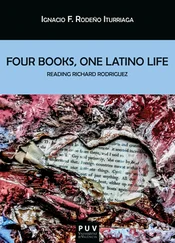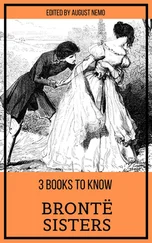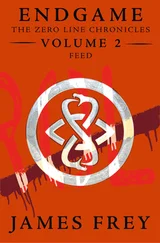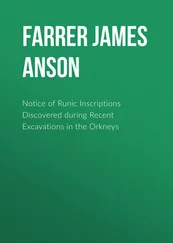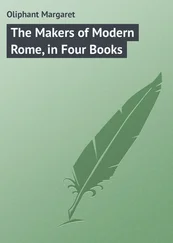James Farrer - Books Condemned to be Burnt
Здесь есть возможность читать онлайн «James Farrer - Books Condemned to be Burnt» — ознакомительный отрывок электронной книги совершенно бесплатно, а после прочтения отрывка купить полную версию. В некоторых случаях можно слушать аудио, скачать через торрент в формате fb2 и присутствует краткое содержание. Жанр: foreign_antique, foreign_prose, на английском языке. Описание произведения, (предисловие) а так же отзывы посетителей доступны на портале библиотеки ЛибКат.
- Название:Books Condemned to be Burnt
- Автор:
- Жанр:
- Год:неизвестен
- ISBN:нет данных
- Рейтинг книги:4 / 5. Голосов: 1
-
Избранное:Добавить в избранное
- Отзывы:
-
Ваша оценка:
- 80
- 1
- 2
- 3
- 4
- 5
Books Condemned to be Burnt: краткое содержание, описание и аннотация
Предлагаем к чтению аннотацию, описание, краткое содержание или предисловие (зависит от того, что написал сам автор книги «Books Condemned to be Burnt»). Если вы не нашли необходимую информацию о книге — напишите в комментариях, мы постараемся отыскать её.
Books Condemned to be Burnt — читать онлайн ознакомительный отрывок
Ниже представлен текст книги, разбитый по страницам. Система сохранения места последней прочитанной страницы, позволяет с удобством читать онлайн бесплатно книгу «Books Condemned to be Burnt», без необходимости каждый раз заново искать на чём Вы остановились. Поставьте закладку, и сможете в любой момент перейти на страницу, на которой закончили чтение.
Интервал:
Закладка:
Simon Morin was burnt with all the copies of his Pensées that could be found, on the Place de Grève, at Paris, March 14th, 1663. Morin called himself the Son of Man, and such thoughts of his as survived the fire do not lead us in his case to grudge the flames their literary fuel. But it is curious to think that we are only two centuries from the time when the Parlement of Paris could pass such a sentence on such a sufferer.
The Parlement of Dijon condemned to be burnt by the executioner Morisot's Ahitophili Veritatis Lacrymæ (July 4th, 1625), but though this work was a violent satire upon the Jesuits, Morisot survived his book thirty-six years, the Jesuits revenging themselves with nothing worse than an epitaph, containing a bad pun, to the effect that their enemy, after a life not spent in wisdom, preferred to die as a fool ( Voluit mori-sot ).
In the same century Molinos, the Spanish priest, and founder of Quietism, wrote his Conduite Spirituelle , which was condemned to the flames for sixty-eight heretical propositions, whilst its author was consigned to the prisons of the Inquisition, where he died after eleven years of it (1696). Self-absorption of the soul in God to the point of complete indifference to anything done to or by the body, even to the sufferings of the latter in hell, was the doctrine of Quietism that led ecclesiastic authority to feel its usual alarm for consequences; and it must be admitted that similar doctrines have at times played sad havoc with Christian morality. But perhaps they helped Molinos the better to bear his imprisonment.
I may next refer to seventeenth-century writers who were fortunate enough not to share the burning of their books. (1) Wolkelius, a friend of Socinus, the edition of whose book De Verâ Religione , published at Amsterdam in 1645, was there burnt by order of the magistrates for its Socinian doctrines, appears to have lived for many years afterwards. Schlicttingius, a Polish follower of the same faith, escaped with expulsion from Poland, when the Diet condemned his book, Confessio Fidei Christianæ , to be burnt by the executioner. Sainte Foi, or Gerberon, whose Miroir de la Vérité Chrétienne was condemned by several bishops and archbishops, and burnt by order of the Parlement of Aix (1678), lived to write other works, of probably as little interest. La Peyrère was only imprisoned at Brussels for his book on the Pre-adamites , which was burnt at Paris (1655). And Pascal saw his famous Lettres à un Provincial , which made too free with the dignity of all authorities, secular and religious, twice burnt, once in French (1657), and once in Latin (1660), without himself incurring a similar penalty. So did Derodon, professor of philosophy at Nismes, outlive the Disputatio (1645), in which he made light of Cyril of Alexandria, and which was condemned and burnt by the Parlement of Toulouse for its opposition to some beliefs of Roman Catholicism.
Passing now to the eighteenth century, we find book-burning, then declining in England, in full vigour on the Continent.
The most important book that so suffered was Rousseau's admirable treatise on education, entitled Émile (1762), condemned by the Parlement of Paris to be torn and burnt at the foot of its great staircase. It was also burnt at Geneva. Three years later the same writer's Lettres de la Montagne were sentenced by the same tribunal to the same fate. Not all burnt books should be read, but Rousseau's Émile is one that should be.
So should the Marquis de Langle's Voyage en Espagne , condemned to the flames in 1788, but translated into English, German, and Italian. De Langle anticipated this fate for his book if it ever passed the Pyrenees: "So much the better," said he; "the reader loves the books they burn, so does the publisher, and the author; it is his blue ribbon." But, considering that he wrote against the Inquisition, and similar inhumanities or follies of Catholicism, De Langle must have been surprised at the burning of his book in Paris itself.
A book at whose burning we may feel less surprise is the Théologie Portative ou Dictionnaire abrégéde la Religion Chrétienne , by the Abbé Bernier (1775), for a long time attributed to Voltaire, but really the work of an apostate monk, Dulaurent, who took refuge in Holland to write this and similar works.
The number of books of a similar strong anti-Catholic tendency that were burnt in these years before the outbreak of the Revolution should be noticed as helping to explain that event. Their titles in most cases may suffice to indicate their nature. De la Mettrie's L'homme Machine (1748) was written and burnt in Holland, its author being a doctor, of whom Voltaire said that he was a madman who only wrote when he was drunk. Of a similar kind was the Testament of Jean Meslier, published posthumously in the Evangile de la Raison , and condemned to the flames about 1765. On June 11th, 1763, the Parlement of Paris ordered to be burnt an anonymous poem, called La Religion à l'Assemblée du Clergé de France , in which the writer depicted in dark colours the morals of the French bishops of the time (1762). On January 29th, 1768, was treated in the same way the Histoire Impartiale des Jésuites of Linguet, whose Annales Politiques in 1779 conducted him to the Bastille, and who ultimately died at the hands of the Revolutionary Tribunal (1794). But the 18th of August, 1770, is memorable for having seen all the seven following books sentenced to burning by the Parlement of Paris: —
1. Woolston's Discours sur les Miracles de Jésus-Christ , translated from the English (1727).
2. Boulanger's Christianisme dévoilé .
3. Freret's Examen Critique des Apologistes de la Religion Chrétienne , 1767.
4. The Examen Impartial des Principales Religions du Monde .
5. Baron d'Holbach's Contagion Sacrée , or l'Histoire Naturelle de la Superstition , 1768.
6. Holbach's Système de la Nature ou des Lois du Monde Physique et du Monde Moral .
7. Voltaire's Dieu et les Hommes; œuvre théologique, mais raisonnable (1769).
No one writer, indeed, of the eighteenth century contributed so many books to the flames as Voltaire. Besides the above work, the following of his works incurred the same fate: – (1) the Lettres Philosophiques (1733), (2) the Cantique des Cantiques (1759), (3) the Dictionnaire Philosophique (1764), also burnt at Geneva; (4) L'Homme aux Quarante Écus (1767), (5) Le Dîner du Comte de Boulainvilliers (1767). When we add to these burnings the fact that at least fourteen works of Voltaire were condemned, many others suppressed or forbidden, their author himself twice imprisoned in the Bastille, and often persecuted or obliged to fly from France, we must admit that seldom or never had any writer so eventful a literary career.
II. Turning now to the books that were burnt for their real or supposed immoral tendency, I may refer briefly in chronological order to the following as the principal offenders, though of course there is not always a clear distinction between what was punished as immoral and punished as irreligious. This applies to the four volumes of the works of the Carmelite Mantuanus, published at Antwerp in 1576, of which nearly all the copies were burnt. This facile poet, who is said to have composed 59,000 verses, was especially severe against women and against the ecclesiastical profession. In 1664, the Journal de Louis Gorin de Saint Amour , a satirical work, was condemned, chiefly apparently because it contained the five propositions of Jansenius. In 1623, the Parlement of Paris condemned Théophile to be burnt with his book, Le Parnasse des Poètes Satyriques , but the author escaped with his burning in effigy, and with imprisonment in a dungeon. I am tempted to quote Théophile's impromptu reply to a man who asserted that all poets were fools: —
Читать дальшеИнтервал:
Закладка:
Похожие книги на «Books Condemned to be Burnt»
Представляем Вашему вниманию похожие книги на «Books Condemned to be Burnt» списком для выбора. Мы отобрали схожую по названию и смыслу литературу в надежде предоставить читателям больше вариантов отыскать новые, интересные, ещё непрочитанные произведения.
Обсуждение, отзывы о книге «Books Condemned to be Burnt» и просто собственные мнения читателей. Оставьте ваши комментарии, напишите, что Вы думаете о произведении, его смысле или главных героях. Укажите что конкретно понравилось, а что нет, и почему Вы так считаете.



